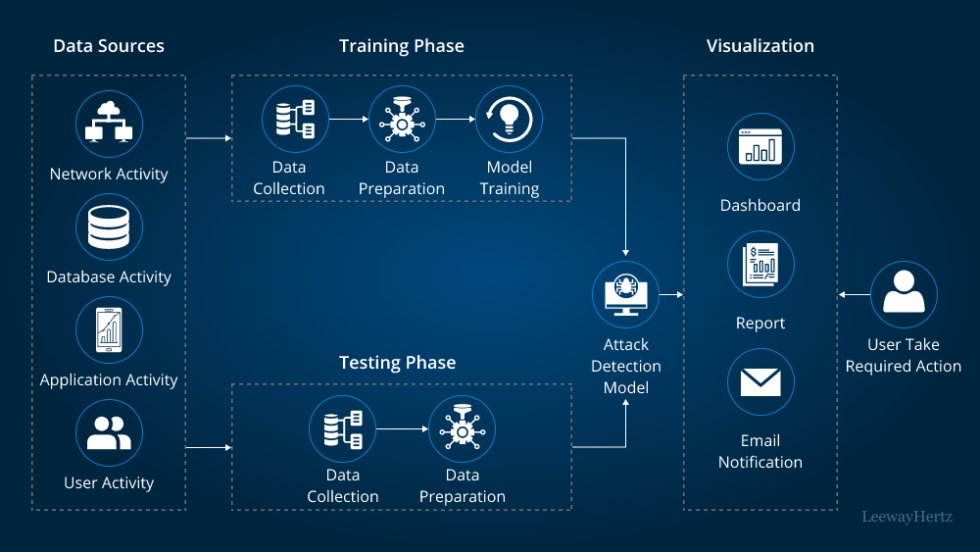🔎 Securing the AI Gold Rush
The AI era is being shaped not just by model performance, but by who can train faster, deploy smarter, and protect better. As foundational models like GPT-4 and Claude scale into hundreds of billions of parameters, the infrastructure behind them—massive GPU clusters, orchestration frameworks, cloud storage pipelines—has become the new digital goldmine.
But while developers push to optimize batch sizes and finetune transformers, security teams are left scrambling. Between public S3 buckets, unauthenticated endpoints, and weak IAM policies, attackers don’t need zero-days to wreak havoc. They just need a GPU job that wasn’t logged, or a container that ran as root.
This guide walks through the real-world security considerations of modern AI workloads—whether you’re building LLMs in the cloud, managing HuggingFace Accelerate, or running Slurm-based GPU clusters on Nebius or AWS.
🔐 1. Know Your Threat Surface
The first mistake most AI teams make? Assuming their environment is “secure enough” because it’s in the cloud or behind VPCs. That’s false security.
Most common threats:
- 🔓 Open Jupyter notebooks: Many GPU VMs come with
jupyter-labpre-installed—and exposed by default. - 🗝️ Leaked credentials: Training scripts often hardcode AWS/GCP keys for convenience.
- 🧱 Public S3 buckets: Checkpoints, datasets, and evaluation results stored without ACLs.
- 🐍 Malicious PyTorch/TensorFlow wheels: Injected via compromised containers or mirrors.
📌 Case Study: In 2022, security researchers found over 200 exposed Jupyter servers with admin access and access to $100k+ GPU clusters. [CISA Advisory]
🧰 2. Secure the Stack – From Driver to DaemonSet
Security in AI infrastructure is often only skin-deep—container images may be scanned, but device plugins and kernel modules are untouched.
Recommendations:
For NVIDIA Stack:
- ✅ Validate integrity of driver/CUDA installers via SHA256.
- 🧪 Use
nvidia-smito audit GPU utilization and detect hidden crypto miners. - 🧿 Restrict use of NVLink Sharp (NVLS) if causing XID errors or cross-job leaks.
For Kubernetes:
- 🚫 Disable hostPath volumes unless absolutely needed.
- 📜 Use PodSecurityPolicies or OPA Gatekeeper.
- ⛔ Don’t run jobs with
privileged: true.
For Slurm:
- 🔐 Rotate SSH keys; never reuse admin keys across nodes.
- 🔎 Audit
prolog/epilogscripts—these are often ignored but can be abused.
🔑 3. Secrets, Buckets, and Bind Mounts
Where you store your model checkpoints matters—and how you access them matters even more.
Don’t do this:
export AWS_ACCESS_KEY_ID=XXXXX
export AWS_SECRET_ACCESS_KEY=YYYYY
Do this instead:
- Use IAM roles or service accounts bound to the workload identity.
- Rotate secrets every 30–90 days.
- Use mountpoint-s3 or goofys with minimum permissions.
🎯 Tip: Split buckets by function—e.g., one for checkpoints, one for logs, one for final models—with distinct permissions for each.
🌐 4. Network Exposure and Lateral Movement
Even in GPU-heavy environments, lateral movement is possible—from compromised containers to underlying nodes or metadata APIs.
Checklist:
- 🚷 Disable inter-pod communication unless required (e.g., for NCCL or MPI).
- 🔒 Don’t expose ingress traffic without token-based or SSO authentication.
- 🕵️ Monitor for side-channel abuse (e.g., DNS tunneling in user jobs).
- 📉 Rate-limit outbound traffic per pod or namespace.
🧪 5. Incident Detection & Response for AI Workloads
You can’t protect what you don’t monitor.
Observability Priorities:
- 📈 GPU memory allocation vs. job schedule logs.
- 🛰️ Outbound data transfer spikes—especially from training nodes.
- 🧩 Audit
kubectland cloud API usage outside your deployment region.
Response Plan:
- Kill rogue job?
- Cordon GPU node?
- Delete namespace and rotate all secrets?
Use automated policy-based tools like Falco or custom Prometheus + Grafana dashboards to watch for known exploit patterns in real time.
🧭 Conclusion: Secure It Now—Or Lose It Later
AI infrastructure is the new cloud gold rush, and everyone from startups to nation-state attackers is looking to stake a claim. Most organizations are running faster than their security can catch up—especially in cloud-native GPU environments.
If you’re deploying LLMs, running massive Slurm arrays, or simply managing inference at scale, now is the time to harden your stack. The next breach won’t come through your web app—it’ll come through an exposed training job, a leaked checkpoint, or a forgotten secret.
Build fast. Train smart. Secure now.

Leave a Reply